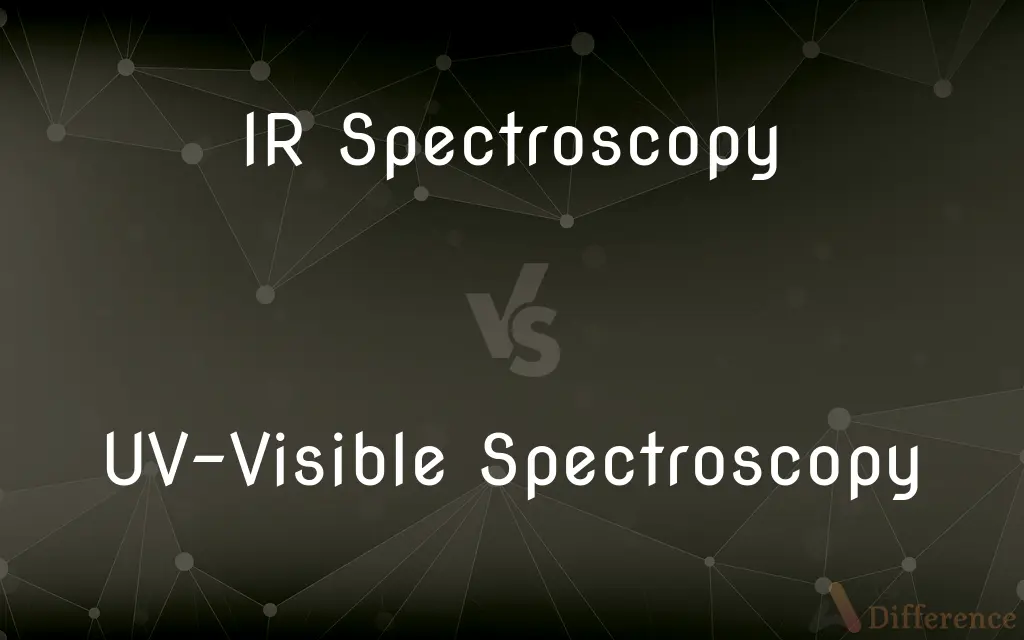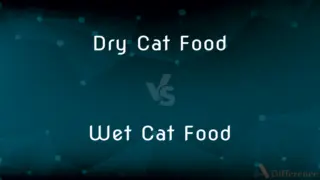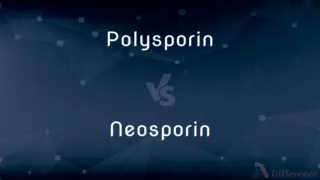IR Spectroscopy vs. UV-Visible Spectroscopy — What's the Difference?
By Tayyaba Rehman & Fiza Rafique — Published on February 22, 2024
IR spectroscopy measures molecular vibrations to identify functional groups, while UV-Visible spectroscopy analyzes electronic transitions to determine compound structure and concentration, highlighting their different molecular insights.

Difference Between IR Spectroscopy and UV-Visible Spectroscopy
Table of Contents
ADVERTISEMENT
Key Differences
IR spectroscopy and UV-Visible spectroscopy are analytical techniques utilized in chemistry to elucidate molecular structures and properties, but they operate on distinct principles and wavelengths of light. IR spectroscopy focuses on the infrared region of the electromagnetic spectrum, identifying molecules by their characteristic vibrational frequencies, which correspond to specific functional groups. This makes IR spectroscopy particularly useful for identifying organic compounds and understanding their molecular structures.
On the other hand, UV-Visible spectroscopy absorbs light in the ultraviolet to visible range, probing electronic transitions within molecules. This absorption can be related to the concentration of the substance in solution via the Beer-Lambert law, making UV-Visible spectroscopy a valuable tool for quantitative analysis in both organic and inorganic chemistry. It is especially useful for studying conjugated systems and determining the concentration of substances in solution.
IR spectroscopy provides detailed information about the molecular vibrations and functional groups present in a compound, whereas UV-Visible spectroscopy offers insights into the electronic structure and can quantify the concentration of analytes in solution. The choice between IR and UV-Visible spectroscopy depends on the specific information required about the sample.
The application of these techniques extends across various fields, from chemical synthesis and pharmaceuticals to environmental analysis and material science. IR spectroscopy is indispensable for identifying unknown substances and studying molecular interactions, whereas UV-Visible spectroscopy is often employed in the analysis of dyes, metals, and water quality.
Understanding the complementary nature of IR and UV-Visible spectroscopy is crucial for researchers and scientists, as combining these methods can provide a comprehensive picture of a molecule's structure and behavior.
ADVERTISEMENT
Comparison Chart
Principle
Measures molecular vibrations
Analyzes electronic transitions
Wavelength Range
Infrared region (2,500 to 25,000 nm)
Ultraviolet to visible range (200 to 800 nm)
Information Obtained
Identifies functional groups and molecular structure
Determines compound structure, concentration
Application
Organic compound identification, molecular structure analysis
Concentration measurements, studying conjugated systems
Quantitative/Qualitative
Qualitative (primarily) and quantitative
Quantitative (primarily) and qualitative
Compare with Definitions
IR Spectroscopy
Uses infrared light to probe molecular structures.
The IR spectrum indicated the sample's complex molecular structure.
UV-Visible Spectroscopy
Measures the absorption of UV and visible light by molecules.
UV-Visible spectroscopy quantified the concentration of the dye in solution.
IR Spectroscopy
Analyzes molecular vibrations to identify functional groups.
IR spectroscopy revealed the presence of a carbonyl group in the sample.
UV-Visible Spectroscopy
Utilized for analyzing electronic transitions.
The electronic transitions of the metal complex were studied using UV-Visible spectroscopy.
IR Spectroscopy
Can distinguish between different isomers.
The technique differentiated between structural isomers based on their IR spectra.
UV-Visible Spectroscopy
Can be used to study the effects of solvents on spectra.
The influence of different solvents on the absorption spectrum was investigated.
IR Spectroscopy
Essential for organic chemistry research.
IR spectroscopy helped in identifying the unknown organic compound.
UV-Visible Spectroscopy
Helps in understanding conjugated systems.
UV-Visible spectroscopy was applied to analyze the conjugated system in the polymer.
IR Spectroscopy
Provides insights into molecular bonding and interactions.
IR spectroscopy was used to study hydrogen bonding in the molecule.
UV-Visible Spectroscopy
Crucial for quantitative analysis in solutions.
The technique accurately determined the pollutant levels in water.
Common Curiosities
Can IR spectroscopy quantify substance concentrations?
While primarily qualitative, IR spectroscopy can also perform quantitative analyses through calibration methods.
Can UV-Visible spectroscopy identify functional groups?
It's not typically used for functional group identification; that's more the realm of IR spectroscopy, due to its sensitivity to molecular vibrations.
What distinguishes IR from UV-Visible spectroscopy?
IR spectroscopy focuses on molecular vibrations and functional groups, while UV-Visible spectroscopy examines electronic transitions and compound concentrations.
Is IR spectroscopy applicable to inorganic compounds?
Yes, though less commonly than for organic compounds, IR spectroscopy can analyze certain inorganic molecules, particularly those with bond vibrations.
What role does the solvent play in UV-Visible spectroscopy?
Solvents can affect the absorption spectrum, influencing peak positions and intensities, hence the choice of solvent is crucial for accurate measurements.
What is the Beer-Lambert Law?
It's a principle in UV-Visible spectroscopy that relates the absorption of light to the properties of the material through which the light is traveling, enabling concentration measurements.
Can both techniques analyze solid samples?
Yes, both can analyze solids, but IR spectroscopy is more commonly used in its various forms (e.g., ATR-IR) for solid samples, while UV-Visible spectroscopy usually requires sample dissolution or special accessories.
Why is UV-Visible spectroscopy important for quantitative analysis?
It follows the Beer-Lambert law, allowing for precise concentration measurements of substances in solution.
What are some limitations of IR spectroscopy?
Its effectiveness can be reduced by water vapor absorption and limitations in distinguishing between closely related compounds.
Why might a scientist choose IR spectroscopy over UV-Visible spectroscopy?
For detailed information on molecular structure and identification of specific functional groups within organic compounds.
How do molecular structures affect IR and UV-Visible spectra?
In IR spectroscopy, molecular vibrations depend on the mass of atoms and types of bonds, while in UV-Visible spectroscopy, electronic transitions are influenced by the molecule's electronic structure.
Can UV-Visible spectroscopy detect all types of molecules?
It's most sensitive to molecules with pi-electrons or non-bonding electrons that can undergo electronic transitions within the UV-Visible range.
What advancements have been made in spectroscopic analysis?
Developments include improved detector sensitivity, software for spectral analysis, and techniques like Fourier-transform infrared (FTIR) spectroscopy for rapid data collection.
How does conjugation affect UV-Visible spectra?
Conjugation typically lowers the energy required for electronic transitions, resulting in longer wavelength (red-shifted) absorptions.
How do sample preparations differ between the two spectroscopies?
IR spectroscopy often requires minimal sample preparation, while UV-Visible spectroscopy samples usually need to be dissolved in a solvent.
Share Your Discovery

Previous Comparison
Dry Cat Food vs. Wet Cat Food
Next Comparison
Polysporin vs. NeosporinAuthor Spotlight
Written by
Tayyaba RehmanTayyaba Rehman is a distinguished writer, currently serving as a primary contributor to askdifference.com. As a researcher in semantics and etymology, Tayyaba's passion for the complexity of languages and their distinctions has found a perfect home on the platform. Tayyaba delves into the intricacies of language, distinguishing between commonly confused words and phrases, thereby providing clarity for readers worldwide.
Co-written by
Fiza RafiqueFiza Rafique is a skilled content writer at AskDifference.com, where she meticulously refines and enhances written pieces. Drawing from her vast editorial expertise, Fiza ensures clarity, accuracy, and precision in every article. Passionate about language, she continually seeks to elevate the quality of content for readers worldwide.














































